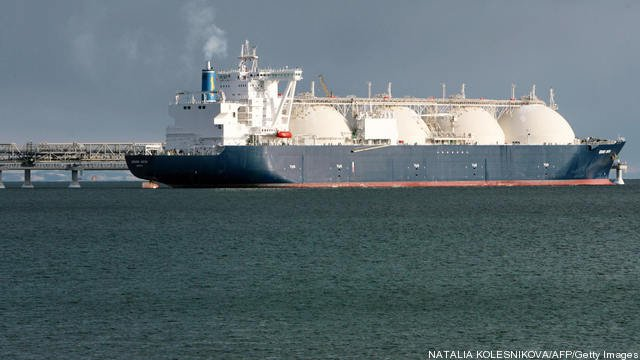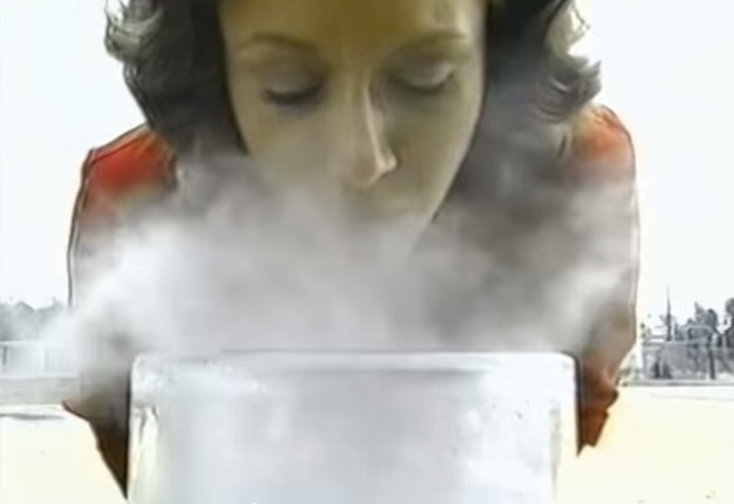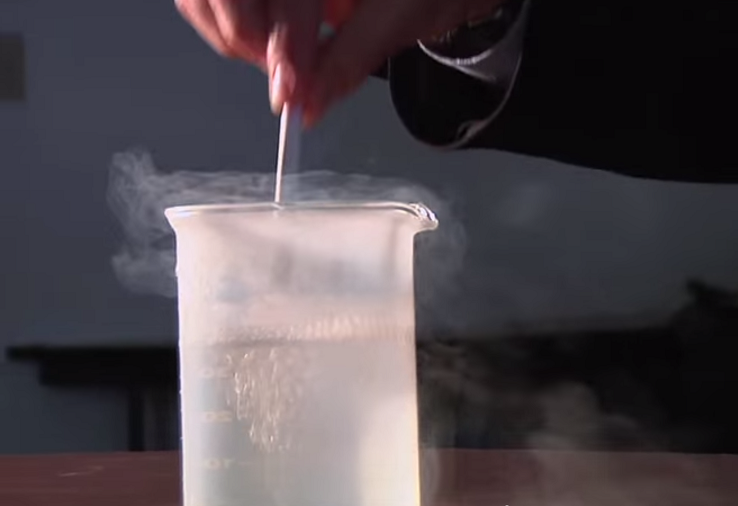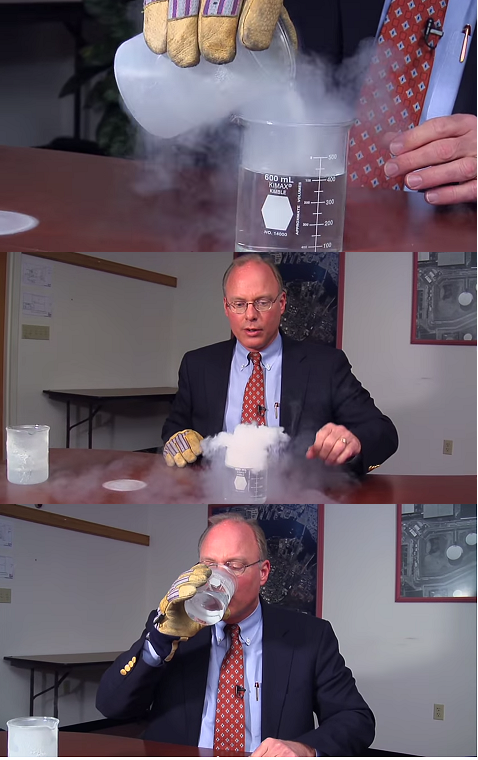Liquefied natural gas (LNG) is often regarded as extremely dangerous and toxic with container ships called floating bombs. But is this perception accurate? The historical reality is that LNG has the best safety record of all common fuel types and is completely non-toxic. Of course natural gas vapors are flammable and present safety hazards that must be managed, but these hazards are substantially less than for gasoline, diesel and other liquid fuels.
LNG is cryogenically cooled natural gas which is liquefied to reduce the volume for shipping and storage. LNG is primarily methane, but can contain up to 10% ethane and propane. All three molecules are non-toxic.
When LNG spills on the ground or water it vaporizes quickly and leaves behind no residues. LNG spills on water do not harm aquatic life or damage waterways in any way. As LNG vaporizes, the vapor cloud can ignite if there is a source of ignition, but otherwise LNG dissipates completely.
The LNG industry has been shipping bulk quantities by container ship since the 1960’s. There are over 100 LNG container ships in operation today, the industry has conducted over 33,000 voyages since 1964 covering more than 60 million miles without there ever being a significant spill, loss of cargo, or environmental incident. There have been LNG ship groundings and engine room fires, incidents typical of the broader maritime industry, but none of the incidences have ever caused containment failures or cargo spills. LNG ships have multiple containment walls and insulation with 8 feet between the hull and cargo making them very robust.
LNG shipping is considered much safer than comparable crude oil shipping. P&L insurance rates are 25% less for LNG container shipping than for crude oil shipping. The liability within the insurance coverage is focused on fire and damage and not on environmental pollution. Crude oil spills are well documented for the long term damage they cause, but comparable environmental threats do not exist for LNG. Insurance rates for natural gas vehicles are also lower than for gasoline or diesel vehicles.
Numerous safety videos have been produced for training firefighters and public officials. There are some common demonstrations that are used to illustrate the fundamental safety of LNG.
- Pouring LNG on the ground at the feet of the trainees to show that LNG vaporizes quickly leaving behind no residue.
- Pouring LNG into a glass of water and then drinking the water.
- Pouring LNG into a glass dish with goldfish in it to demonstrate that LNG floats on the surface of water and does not harm aquatic life.
- Putting out a lit cigarette in a glass of LNG to demonstrate that liquid methane does not burn (only the vapors are flammable).
LNG vapors are non-toxic. credit: Westport
LNG does not hurt the fish. credit: Westport
The cigarette goes out. LNG does not burn. credit: CLNG
Bill Cooper from the Center for LNG does the drinking glass demo. Notice he is pouring out the LNG inside an office. Would anyone pour gasoline, diesel or crude oil on to their desk? Credit: CLNG
Here are some good videos:
Pipeline and Hazardous Materials Safety Administration, LNG Safety and Emergency Response
Center for Liquefied Natural Gas, LNG: The Facts
Freeport LNG, Demonstration Video
Westport, LNG – The Safe Fuel
The primary characteristics that make LNG safer than other fuels are:
- Methane vapors are lighter than air and dissipate quickly, unlike other fuels that pool on the ground and create a greater fire hazard as well leaving behind slicks, sludges and other filthy residues.
- Methane is non-toxic, most other common fuels are highly toxic.
- LNG tanks are all double walled and very thick, making them much stronger and robust than tanks for other fuels and chemicals.
- Methane is not explosive in open air and is less flammable than other fuels.
Natural gas burns with a visible flame and has narrow flammability limits, combusting only in air-to-fuel proportions of 5-15%. Below 5% the mix is too lean to burn and above 15% the mix is too rich to burn. Pools of liquefied natural gas do not ignite as readily as pools of gasoline or diesel fuel. The auto-ignition temperature of methane is 1004° F, significantly higher than gasoline (495° F) or diesel (600° F). So while open flames and sparks can ignite natural gas many hot surfaces such as a car muffler will not. Methane vapors in open air exhibit a very slow flame speed of about 4 mph.
LNG is still hazardous though, and if spilled it will boil rapidly creating a vapor cloud. Initially the methane vapor will condense water vapor out of the air making the cloud visible and causing it to hang close to the ground until it warms up. If an ignition source is present the cloud can ignite and it will burn back to the source. If the cloud does not ignite it can potentially travel some distance under the right conditions, but typically it will quickly warm up, rise and dissipate.
Other potential hazards of an LNG spill include:
- BLEVE (boiling liquid expanding vapor explosion) results from rapid vaporization due to container failure, but these are highly unlikely due to modern US DOT standards which mandate double walled containers and durable insulation.
- RPT (rapid phase transition) is an extremely uncommon and curious phenomenon where large quantities of LNG dumped in water can physically explode but not combust. There is no fire, but there is potential for damage to nearby equipment. RPT’s have studied extensively in labs but never documented in real world practice. They are more common with rich mixtures of LNG that have high proportions of ethane and propane. It would take more than 10,000 gallons of LNG in an RPT scenario to cause significant damage and as such are considered to be extremely unlikely.
- The most dangerous and likely hazard is if LNG is spilled inside a contained area where the vapors cannot dissipate, in this scenario there is great danger of fire if ignition sources are present.
- Extreme ruptures of LNG tanks, such as a highway accident of an LNG transport truck or a weapon attack, could cause a fire if there are ignition sources present such as sparks or fires.
- LNG is cryogenic, cooled to -260° F, and can cause cryogenic burns to skin.
- Methane can be an asphyxiant in an enclosed space.
- Methane fires must be fought with dry chemicals as water can excite the fire.
- LNG does not take odorants so it has no smell.
The only major LNG accident in the USA occurred in the early days of the industry during WWII in Cleveland, Ohio in 1944. Due to wartime material shortages, a tank constructed with substandard materials ruptured from embrittlement and spilled over 1 million gallons of LNG. The LNG overflowed the containment dikes and spilled into a nearby sewer drain. The vapors contained in the sewer pipes ignited and burned down a residential neighborhood, killing 128 people and injuring over 200.
While this tragedy is often referenced by opponents of LNG, it was an important learning lesson for the industry who adopted stringent safety codes afterwards to prevent this type of accident from ever occurring again. Containment dikes are designed better and are engineered to hold the entire volume that is stored in tanks. Material choices are much more stringent. And most importantly, LNG storage tanks and not located in areas where spills will threaten local communities. Storage tanks leaking into sewers presents a worst case scenario where the vapor is contained and not allowed to dissipate.
LNG storage tanks for maritime shipping and road transport, as well as future tanks for use in rail, are built to stringent standards and are inherently more robust than crude, fuel and chemical tanks. LNG tanks are always double-walled with extensive pressure relief systems. LNG tanks have survived many highway accidents without rupturing. The real world safety record speaks for itself, whether on the roads or on the open seas, LNG is much to safer to transport and use than comparable liquid fuels.
On a final note, for those who are opposed to fossil fuels, LNG is readily produced from bio-methane. LNG does need to be a fossil fuel at all, it can be renewable. Bio-LNG is perhaps the greenest and safest fuel we have available.
Breaking Energy, Dec. 22, 2014 (.pdf)
The Energy Collective




